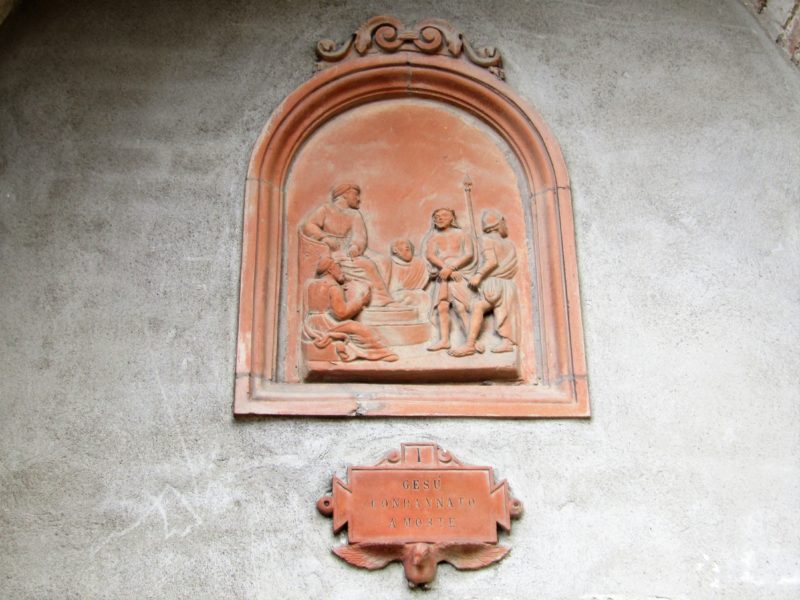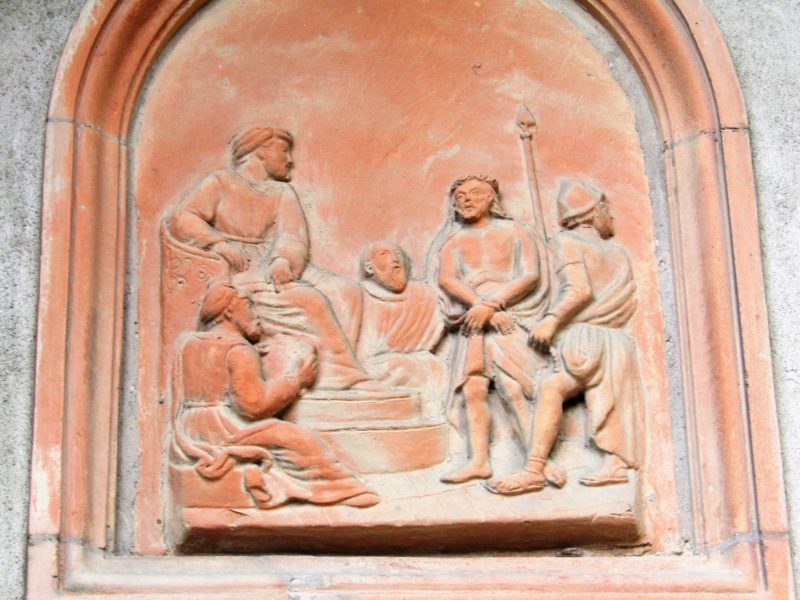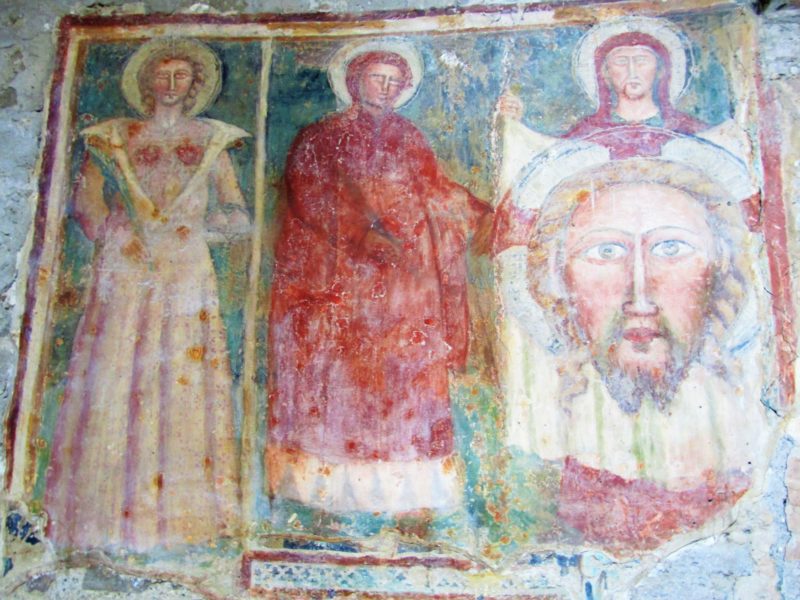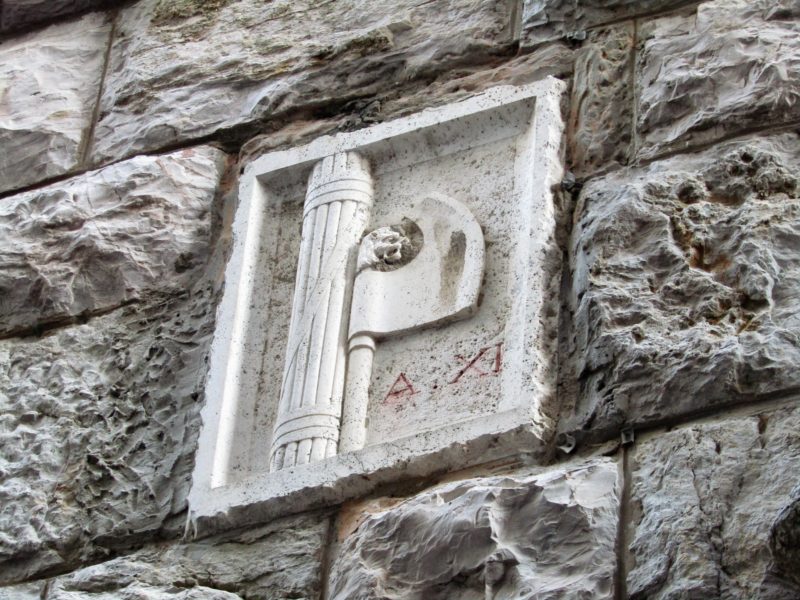Tag Archives: Italy
Italy the Day After
Good piece that should calm down the hysterics. It is in – of all places – the NYT.
Italy
What happens if Giorgia Meloni wins today’s election in Italy?
Good Friday
Stuck in Toronto – there are worse places to be, of course – I feel the dearth of great art. It isn’t like walking around virtually any city in Italy, say, where you can be treated to absolute delights in a random manner. For Good Friday, I thought I’d post some images pertaining to the day. All three were taken in Perugia, Italy, in 2019. First two are high reliefs along the steep staircase that leads up to the Convento di Monteripido. The third is an image of Saint Veronica from inside the Tempio di Sant’Angelo (also somewhere you reach after quite a climb, something consistent with so many Umbrian cities). Her story has always enchanted me.
For all who celebrate, I wish a joyous and hopeful Easter.



La Storia
Although Italy has seen some protests these past few months, inspired by the protests in the U.S. after the death of George Floyd, they never amounted to the kind of mad tearing down of statues and such by the mob as we have seen in North America. A few statues in Italy got paint thrown on them, but nothing else ensued. I think one of the reasons this sort of revising of history has not taken off in Italy the way it has in younger countries, is simply that they have so much history around them. They couldn’t begin to tackle it all – it would be exhausting. (Heck, if Italy got rid of everything tainted with slavery they would have to remove everything Roman.) One example: on my way to classes in Perugia these past few years I have walked by the plaque seen below. It shows the Fascist symbol – the fascio littorio — with Anno XI, meaning Fascist year 11, i.e. 1933 (the year the building was put up, one assumes). No one even seems to look twice at it. True, the university where I study has a Fascist-era painting in one of its main halls that has been revised – the face of Mussolini has been painted over with a generic Italian man’s face – but I can see why that needed to be done.

St. Mary Magdalene
Easter
Italy
I have been so sad for my beloved Italy. My first extended stay there was in 2012 (I had been there on short trips prior to that date). On one particularly beautiful autumn day in Perugia, I was walking to my Italian class and I heard a voice from above. I looked up and saw a woman leaning from her balcony, like a modern-day Juliet. But she was not in love. She was gesticulating madly at my bare ankles. It took me a while to realize it, but she was telling me to go back in and put on socks. She kept insisting that it was “un freddino, oggi.” A cold one, today. I explained that I was from Canada and that it didn’t feel cold to me.
I thought of that moment when I watched the many touching online videos of Italians singing from balconies and windows these past few weeks, connecting in the only ways they can find. These images are particularly bittersweet because I suspect that in Toronto, we’d be filing noise complaints against each other in the same situation.
Since 2012, I’ve gone back annually, but that year was my first exposure to what I call the “large extended family” aspect of life in Italy. Italians up and down the boot will insist that their town and dialect and local pastry is vastly different and infinitely better than the one 20 miles over. And while my Italian is fluent enough that I can decipher some of those differences, to Canadian or American eyes there is still relative homogeneity in Italian culture.
There are more immigrants now, there are the culturally globalizing forces of television and the internet, but compared to life in even small-town Ontario, there’s always a feeling in Italy of being part of the same dysfunctional – and at times joyful and warm – family. There is a lack of privacy that can take some getting used to. It is telling that Italians don’t have their own word for privacy – they use ours. “La privacy.” (I do like that it’s feminine.)
It can be amusing, like when I was on a bus trip and Italians from the front of the bus got into a conversation with Italians at the back. They didn’t get up to talk to their new acquaintances. They just shouted back and forth. Eventually, people in the middle seats added their two euros.
I believe it is one of the reasons the screen window has not become a hit in a country where the lengthy mosquito-season, scary spiders and lack of effective air-conditioning ought to make it one. With a screen window you can’t lean out and tell a woman you’ve never met that she should put on socks. If you read or watch ‘My Brilliant Friend’ – the exceptional HBO series which began its second season this month — you will recall the numerous scenes in which people are leaning out their windows or off of their balconies talking to, or about, someone. (And if you aren’t watching the series, you are a fool.)
I am generalizing, and the balcony scenes of quarantined Italians likely appeal to us because they reflect a comforting stereotype in a frightening time: Italians emoting from balconies; Italians with accordions and mandolins; singing Italians; shouting Italians. And yes, it’s possible that in another month they will be throwing more than their voices from windows and terraces.
But I have lived on three continents and traveled extensively and can’t think of a people with more of a compulsion to communicate. Fittingly, Italians are addicted to their telefonini (cellphones) but that isn’t enough. This is a country where, apart from the famous baci and abbracci (kisses and hugs), it is commonplace to see people of all ages walking with arms linked – men, women, men and women. As the British journalist John Hooper writes in his book, The Italians, “No people on earth express themselves as visually as the Italians.” The need for the face-to-face is strong.
So much so that when I first heard of Italy’s nation-wide quarantine, I thought, “yeah, this will go well. A nation of pathological extroverts with limited respect for the law asked to obey the law and behave like introverts.” But they are, with few exceptions, doing what they can to make it work.
In 2016 my time in Italy coincided with a spate of powerful earthquakes; I was living 30 kilometres from the epicentre and one morning woke up feeling rather like the little girl in The Exorcist, as my bed shook and rattled. When I gave away my anxiety, Italians – friends, acquaintances and strangers – would try to reassure me, saying, Niente paura. No fear. Don’t worry. Of course, Italians have painful and extensive experience with earthquakes. Not so Covid-19. I don’t think a mere niente paura can provide much comfort against the current death and illness toll. That is where the interfering extended family and those magical musical moments come in handy.
Honouring Holocaust Victims by Bringing their Music to Life
I first saw this report on 60 Minutes in December – the entire transcript with video clips is here. It tells the story of Francesco Lotoro, an Italian man who has dedicated his energy to discovering the music written by prisoners of Nazi death camps and bringing it to life. What a blessing he is, as is his wife.
Aided by his wife, Grazia, who works at the local post office to support the family, Lotoro has collected and catalogued more than 8,000 pieces of music, including symphonies, operas, folk songs, and Gypsy tunes scribbled on everything from food wrapping to telegrams, even potato sacks.
The couple have established a foundation to archive the music and their work in their native Barletta, in the Puglia region of Italy. When/if I am lucky enough to return to Italy, I will visit Barletta and the Lotoros’ foundation.


